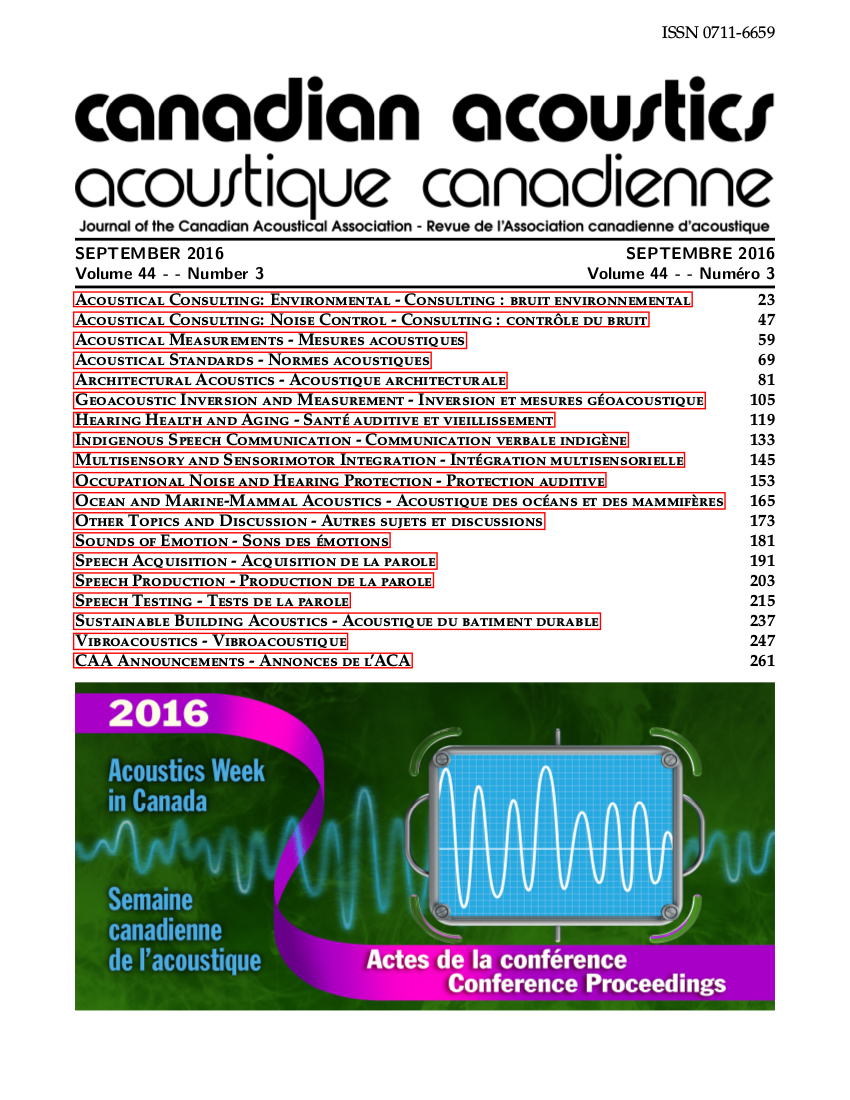Breathing position and the perception of consonants
Abstract
Several theories of speech perception and acquisition suggest a role for the motor system in auditory processing. One class of these theories suggests that motor information plays an especially important role when auditory speech processing is noisy, ambiguous, or otherwise hard to process. Empirical studies exploring this hypothesis have often demanded that experimental participants move their articulators in speech-like ways when perceiving, but here, we design an experiment in which participants are asked--in a more implicit manner--to maintain an articulatory position while perceiving speech.
Our manipulation involved breathing through either the mouth or nose, which necessarily changes the position of the velum (up or down). In this study, we examined the perception of consonant sounds as experimental participants breathed through the nose or mouth. Speech sounds where presented to native French speakers, and involved either an experimental condition, in which the sounds differed mainly with respect to the position of the velum (/ada/ or /ana/), or a control condition, in which the sounds differed mainly with respect to the position of the tongue (/ada/ or /aga/). Results suggested that breathing through the nose affected speech categorization in the experimental condition, such that more ambiguous sounds were perceived as /ana/ than in the mouth condition. No such differences were seen in the control condition.
These results support the notion that implicit, and very subtle motor information can affect auditory speech identification, particularly when the speech sounds are ambiguous. This supports classes of speech processing theories that incorporate forward models in the motor system (i.e., when the motor system creates expectations about the sensory consequences of an action). Our data suggest that the simple act of breathing through the nose or mouth can create subtle expectations about whether an ambiguous speech sound is heard as a /d/ or /n/.
Additional Files
Published
How to Cite
Issue
Section
License
Author Licensing Addendum
This Licensing Addendum ("Addendum") is entered into between the undersigned Author(s) and Canadian Acoustics journal published by the Canadian Acoustical Association (hereinafter referred to as the "Publisher"). The Author(s) and the Publisher agree as follows:
-
Retained Rights: The Author(s) retain(s) the following rights:
- The right to reproduce, distribute, and publicly display the Work on the Author's personal website or the website of the Author's institution.
- The right to use the Work in the Author's teaching activities and presentations.
- The right to include the Work in a compilation for the Author's personal use, not for sale.
-
Grant of License: The Author(s) grant(s) to the Publisher a worldwide exclusive license to publish, reproduce, distribute, and display the Work in Canadian Acoustics and any other formats and media deemed appropriate by the Publisher.
-
Attribution: The Publisher agrees to include proper attribution to the Author(s) in all publications and reproductions of the Work.
-
No Conflict: This Addendum is intended to be in harmony with, and not in conflict with, the terms and conditions of the original agreement entered into between the Author(s) and the Publisher.
-
Copyright Clause: Copyright on articles is held by the Author(s). The corresponding Author has the right to grant on behalf of all Authors and does grant on behalf of all Authors, a worldwide exclusive license to the Publisher and its licensees in perpetuity, in all forms, formats, and media (whether known now or created in the future), including but not limited to the rights to publish, reproduce, distribute, display, store, translate, create adaptations, reprints, include within collections, and create summaries, extracts, and/or abstracts of the Contribution.


